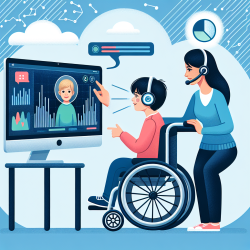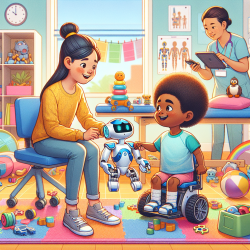In the realm of speech-language pathology, the integration of eye-gaze control technology for children with cerebral palsy (CP) is a burgeoning area of interest. The recent research article, Stakeholder consensus for decision making in eye-gaze control technology for children, adolescents and adults with cerebral palsy service provision: findings from a Delphi study, offers a wealth of data-driven insights to enhance clinical practices. Here’s how practitioners can leverage these findings to improve outcomes for their young clients.
Understanding Eye-Gaze Control Technology
Eye-gaze control technology utilizes an infrared camera and specialized software to track and respond to a user's eye movements, enabling them to interact with a computer or speech-generating device. This technology is particularly beneficial for individuals with significant physical disabilities, such as cerebral palsy, who can use purposeful looking behaviors to communicate and control their environment.
Key Findings from the Delphi Study
The Delphi study achieved consensus on 94 statements critical for the successful implementation of eye-gaze control technology. These statements encompass:
- Person Factors: Importance of individualized approaches and gathering information from the user and their support network.
- Support Networks: Essential training and involvement of family members, caregivers, and professionals.
- Environment: Consideration of the user’s environment and necessary adjustments for optimal technology use.
- Technical Aspects: Detailed guidelines on device setup, calibration, and compatibility.
Implementing the Findings in Practice
To effectively implement eye-gaze control technology, practitioners should:
- Conduct Comprehensive Assessments: Evaluate the user’s vision, cognitive abilities, and motor skills. Use tools like the Visual Function Classification System to guide these assessments.
- Develop Individualized Plans: Tailor the technology setup and training to each child’s specific needs and goals. Collaborate with a multidisciplinary team to ensure comprehensive support.
- Engage in Continuous Training: Provide ongoing education and support to the user and their support network. This includes regular practice sessions embedded in daily routines.
- Monitor and Evaluate Outcomes: Use goal attainment scaling and other outcome measures to track progress and make necessary adjustments.
Encouraging Further Research
The Delphi study highlights the need for continued research to refine and expand the use of eye-gaze control technology. Practitioners are encouraged to stay updated with the latest developments and contribute to the growing body of evidence through clinical practice and research.
To read the original research paper, please follow this link: Stakeholder consensus for decision making in eye-gaze control technology for children, adolescents and adults with cerebral palsy service provision: findings from a Delphi study.










